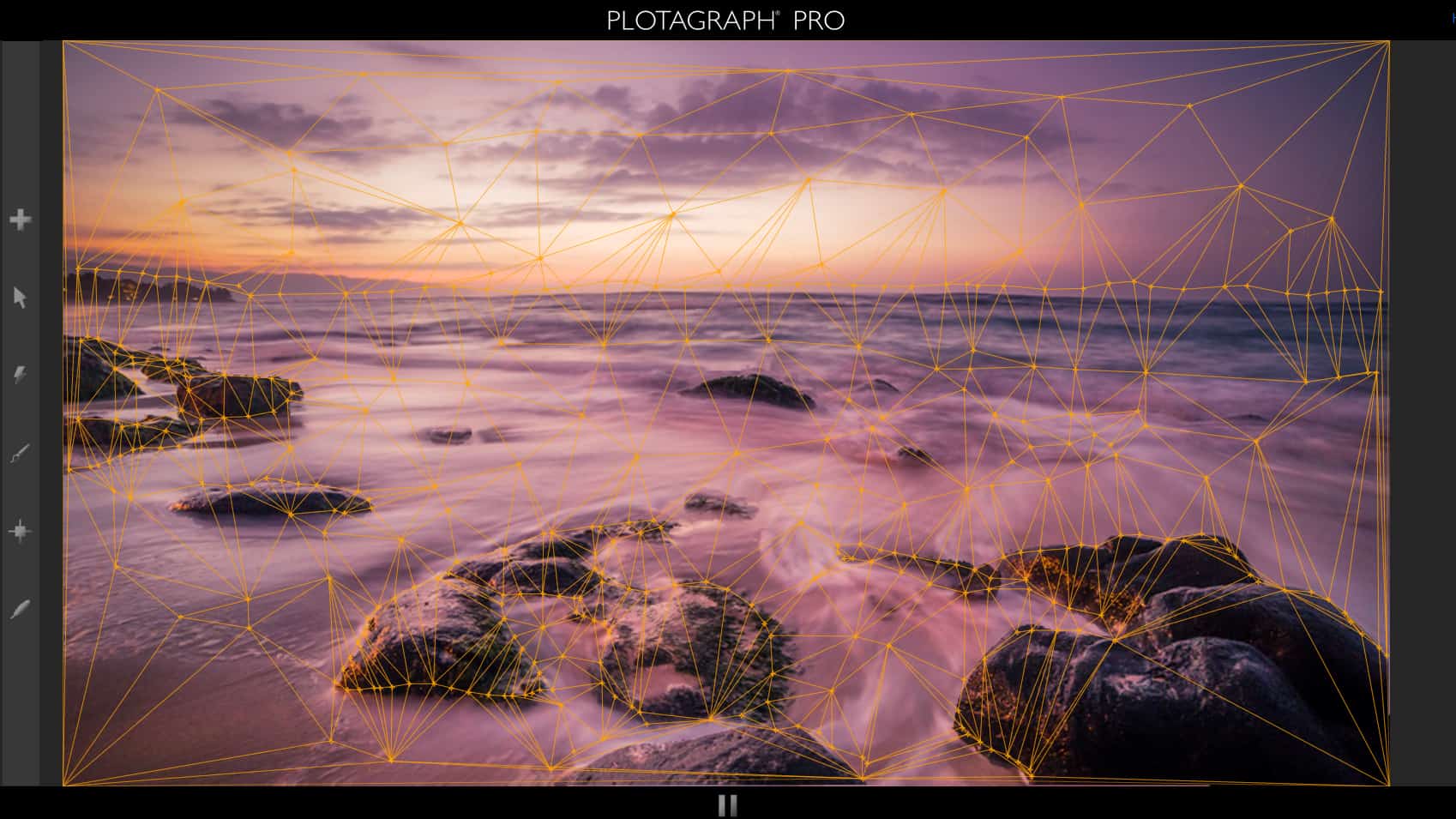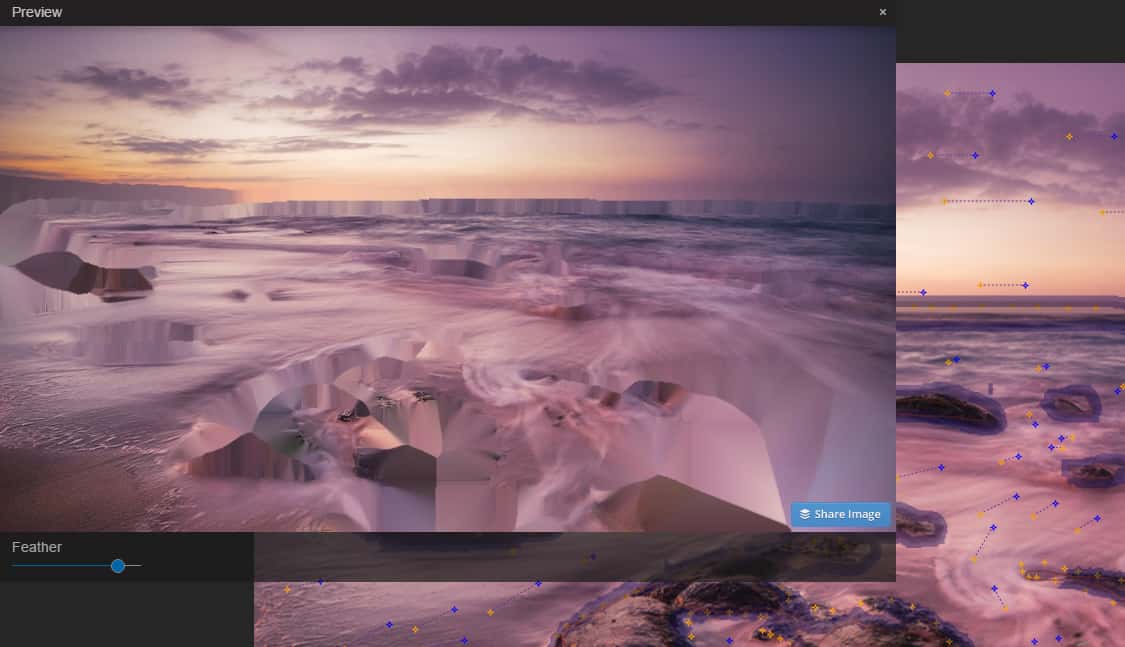This is the Innovation of still imagery: Plotagraph Pro
The photography industry is in a whirlwind of advancement and innovation. From super wide angle lenses with little distortion to flying cameras that can avoid obstacles, it is difficult to keep up with and quite honestly, I have almost stopped trying completely. Every once in a while, though, a milestone of innovation peaks its head around the corner and manages to stay out of the whirlwind. Plotagraph Pro is one of those advancements.
Plotagraph Pro is an online-based program that allows you to turn any still image into a moving work of art. When I first saw a Plotagraph my head spun, I was in shock that a landscape could remain so still during a video. That is until I researched it and found that the “video” was actually a single photo that was manipulated to move.
Troy Plota and the team at Plotagraph Pro have hit a grand slam with their program, and I am very excited to share it with you on f.64 Academy.
The Interface
At first glance, the interface is relatively simple. It has very few tools to clutter your mind and is laid out in an orderly manner. I would say that my overall learning curve to really understand the interface and tools was no more than 15 or 20 minutes of experimentation.

The Good:
1. The software is hosted online: This may sound like a negative trait, however, all of the graphic rendering and processing is happening online and not on your machine. This is great for users with slower PC’s or Mac’s that do not have a dedicated video card. It takes quite a bit of power to render and prepare video content. Having all of that accomplished online is a life saver!
During my experimentation, I would create one Plotagraph, set it to render and move onto the next one while I waited for my previous Plotagraph to render. You could never do that with video processing software as it ties up your machine for the rendering process. Also, with it hosted online, there is no need to update it on multiple computers, it can be used anywhere!
2. The rendered videos are stored online. Video content is very heavy on your computer. Some of the videos I render at 1080p HD are near 1 gig for a 15-minute tutorial. Having off PC storage means my projects are safe even if my machine manages to crash or become inundated with video content.
3. A very small learning curve. With just a little bit of time, I was able to figure out the interface with little to no help. I will admit, when I first get a piece of software, I throw away the instruction manual and just dive in head first. I like to learn things on my own and I was able to learn Plotagraph Pro very quickly.
4. There is nothing else like it! In all my years of beta testing software, conducting reviews, and making tutorials, I have yet to see a program that does what Plotagraph Pro so gracefully accomplishes. I tried to mimic it on my own in Photoshop and failed miserably. There is nothing like it in the industry and that makes it truly unique.
5. The proof is in the pudding. As with anything, the proof is in the end result. Rarely do people buy products for the sake of the product, they buy them for the results. The resulting Plotagraphs are absolutely stunning. I could look at them on a loop all day and revisit some of the locations I have shot as if I am actually there watching the water recede into the ocean.
The Bad: (Read the post update below)
1. The Mask Preview: This is a really picky one, but one I had to comment on. I have seen many masks and mask previews with a feather before, but this one is very odd to make out. As you increase the feather you don’t see a red haze like you would a Quick Mask in Photoshop. Instead, you see a blocky depiction of your image that doesn’t really tell you much about the size of the feather. You are better off looking at the blue mask line to make out how far the mask is feathered.

2. The Price Tag: At $300 per year Plotagraph Pro has outbid every amateur photographer who wants to have a go at it and be creative.
POST UPDATE 01/03/2017
Plotagraph has since moved out of the beta and listened to the community.
- The Mask Preview has been fixed.
- The price tag is still $300 per year, however, there is also a $80 quarterly plan.
The Bottom Line:
The $300 price tag per year is a deterrent for many photographers. Surely the program is nothing less than genius, but it is a steep asking price and immediately cuts off the vast majority of people who would use it
Plotagraph Pro is introducing the industry to something we have never seen before, the ability to animate a still image and do it WELL! Well is the keyword there. I was shocked when I saw my first Plotagraph and I was beside myself when I made my first one. As the program is still in Beta, I am excited to see the direction that it goes as it grows and evolves.
Plotagraphs set to Music
Seeing your images in motion set to music just may bring tears to your eyes. I could look at this forever.









Hi Blake:
Thanks for a very good review and for sticking up for the amateurs who don’t have deep pockets for items like this. I believe there will competition in the future which might lower the entry point.
Also…your creativity, craftsmanship, etc. are well displayed with your musical sample! Great job!!
Blake,
How did you get the Ken Burns effect on your images?
Great tutorial on Platagraph! In fact, it’s MUCH better than the one on Platagrah’s site.
Thanks! I would have to agree. Their intro tutorial left a lot to be desired!
I like this once I learn this have so many images this can work for me. But I hope this will not take so long be fore I get to the PhotoPlus show in New York.
John”Ace” Lane
Hi Blake!
Great reviews, and your plotagraphs are fantastic. Have you since found anything else that works as well?
I’m hooked on this concept and thinking to take the plunge on this.
I’ve been playing around with the 4K video I can record on my camera to make moving stills – which seems more realistic. But also had limits.
Appreciate any advice.
Looking forward to your visit in September!
1Thanks, Plotagraph is pretty darn cool! Nothing works as well as this when it comes to making videos from still images. It is the best and pretty much only in its class. IT is much cheaper now, 19.99 per month with a free version.
4k in camera could make for pretty cool cinemagraphs. Which are different than Plotagraphs. Cinemgraphs keep one frame still with a mask for the movement, where this is making movement from a single still.
I am really looking forward to my next trip out there. It looks like I’ll be out there in October 🙂